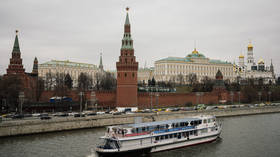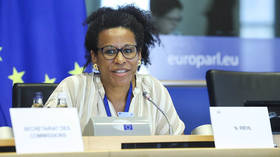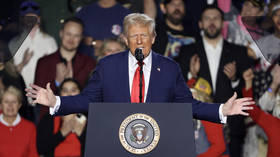Takes one to know one? New ‘Russian disinformation’ scare-sheet by State Department’s propaganda arm is full of projection
The State Department has released a report purporting to unmask “Russia’s disinformation and propaganda ecosystem,” highlighting supposed Russian proxies in an effort to cast all opposition to US policy as Kremlin-linked.
Behind every narrative unfriendly to US geopolitical aims is a Russian proxy typing madly away, according to the Global Engagement Center (GEC), the State Department’s “counter-propaganda” vehicle, which released a report to that effect on Wednesday titled “Pillars of Russia’s Disinformation and Propaganda Ecosystem.”
More than half of the 76-page paper consists of “proxy site profiles” – writeups of websites deemed to be secretly (or not-so-secretly) operated by the Kremlin. While some are openly connected to the Russian government (New Eastern Outlook, an official publication of the Russian Academy of Sciences), others – like Montreal-based Global Research – are not.
In the eyes of the GEC, however, all “serve no other purpose but to push pro-Kremlin content” (which might be news to the websites’ operators). Most have previously appeared on lists of “Russian propaganda websites” such as the sprawling blacklist published by PropOrNot – a shady outfit linked to pro-war think tank, the Atlantic Council – in November 2016.
While the report is supposedly dedicated to “exposing Russia’s tactics so that partner and allied governments, civil society organizations, academia, the press, and the international public” can arm themselves against evil Kremlin propaganda, its focus on specific websites, their social media follower counts, and the amount of traffic they get seems tailor-made for legitimizing government censorship. Any ideas which resemble the content of these particular websites are to be squashed, sidelined, and suppressed, as are any other sites who publish writers associated with the “proxy sites.”
The “ecosystem” metaphor is deployed to explain why some alleged Russian proxies occasionally come out with material opposing the Russian government line – they’re just “muddying the waters of the information environment in order to confuse those trying to discern the truth.”
As for “truth,” the report has an interesting interpretation of the concept. The claims that it deems to constitute “disinformation” include the assertion that “financial circles and governments are using the coronavirus to achieve [their] own financial and political goals” (are there any that aren’t?).
They also include claims that “EU bureaucrats and affiliated propaganda bodies are… blaming Russia for the crisis over the outbreak of coronavirus” (who knew the Financial Times was a Kremlin disinfo outlet too?)
Also included are claims that “George Soros’ tentacles entangle politics and generate chaos around the world” (if the shoe fits…).
The GEC report wouldn’t be a Russia scare-sheet if it didn’t include a heavy dose of projection, and this one does not disappoint. The Kremlin’s “weaponization of social media” and “cyber-enabled disinformation” are deemed “part of its approach to using information as a weapon,” while Moscow is accused of “invest[ing] massively in its propaganda channels, its intelligence services and its proxies to conduct malicious cyber activity to support their disinformation efforts.”
But the CIA and US military intelligence have been engaging in pre-emptive cyber-warfare for two years with the full knowledge and consent of the executive branch – a legitimization of covert activities that previously ran on a don’t-ask-don’t-tell basis dating at least back to the development of the Stuxnet virus that devastated Iran’s nuclear sites over a decade ago.
US weaponization of social media is so pervasive the US Army was recently booted off streaming platform Twitch for relentlessly propagandizing teenage users. The Pentagon has been spreading pro-US propaganda using hordes of “sock puppets” – fake social media accounts purporting to be real people – for upwards of a decade. Indeed, the report hints at these very operations, praising the “thriving counter-disinformation community” that is “pushing back” against those naughty Russians.
With social media platforms jittery over the looming US election in November, the report appears designed to serve as a handy cheat-sheet as to which opinions to censor to avoid a repeat of President Donald Trump’s upset victory in 2016 – even though none of the listed “proxies” could be considered pro-Trump by any stretch of the imagination. It also provides a portable reference for Americans worried about committing thought-crime, though the complete lack of fanfare accompanying its publication – Secretary of State Mike Pompeo mentioned it in passing during a press conference on Wednesday – would seem to suggest it is not meant for the hoi polloi.
The statements, views and opinions expressed in this column are solely those of the author and do not necessarily represent those of RT.

















